Integrating a user-centered taxi service
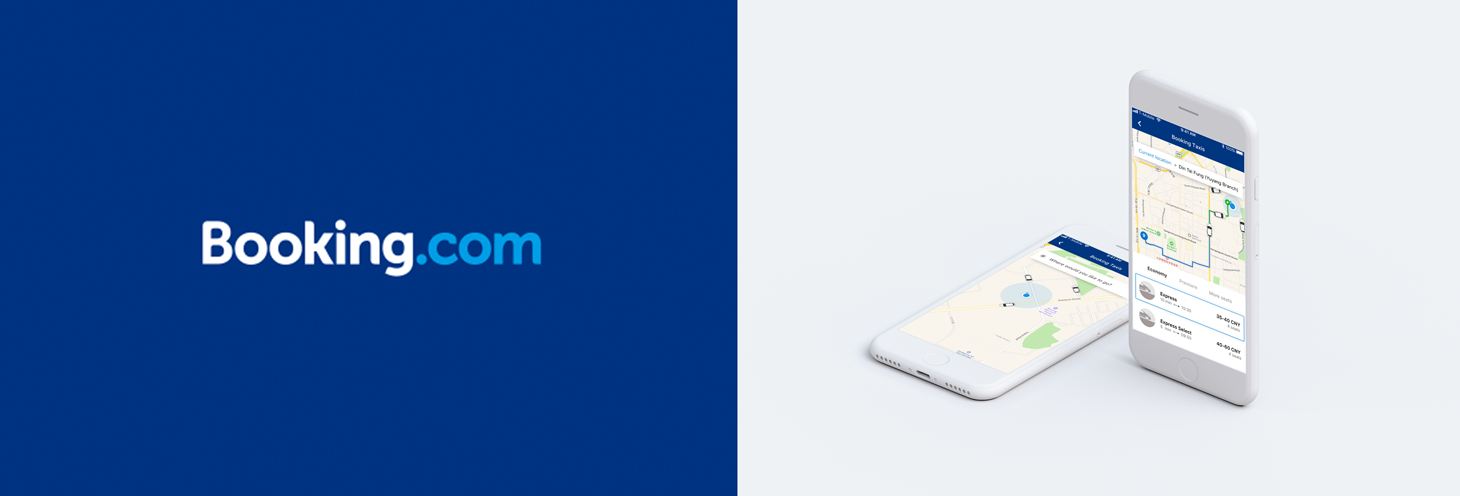
Timeline Platform My role Sep 2018 – Dec 2018 iOS and Android Product Designer
Overview
In a quest to create unforgettable travel experiences, Booking.com embarked on a journey to integrate a taxi on-demand service into their services. Our mission was clear: Make travel seamless and enjoyable for travelers. To achieve this, we embraced a user-centered design approach and organized a Design Sprint to ensure that our taxi service met the unique needs and preferences of our diverse user base.
All information in this case study is my own and does not necessarily reflect the views of Booking.com
The Challenge
Booking.com aimed to enhance the travel experience for its users by providing an integrated taxi on-demand service. The goal was to reduce friction in the travel journey by allowing users to book taxis seamlessly through the Booking.com app. The key challenges included:
- User Experience: The existing process of booking taxis was disjointed and required users to switch between multiple apps, causing a drop in user engagement.
- Trust and Reliability: Users were often hesitant to use third-party taxi apps due to concerns about safety and reliability.
- Competition: To remain competitive in the travel market, Booking.com needed to offer a comprehensive travel solution.
Design Process
Our users were as diverse as the places they traveled to. We catered to leisure travelers seeking adventure, families in search of quality vacations, and business professionals navigating unfamiliar cities. Understanding these unique user profiles was pivotal to designing an inclusive solution.
1. Research
The design process began with a thorough understanding of user behavior and preferences:
- User interviews: Conducted interviews with travelers to identify pain points, behaviors, and expectations regarding taxi bookings.
- Market research: Analyzed existing taxi on-demand services to understand their strengths and weaknesses.
Key learnings
- Pain points: Users expressed frustration with long waiting times, difficulty in finding available taxis, and uncertainty about the arrival time of their ride.
- Behavioral patterns: It was observed that many users preferred to book taxis in advance for scheduled appointments, while others needed on-demand services for immediate transportation needs. This highlighted the importance of offering both scheduled and on-demand options.
- Expectations: Users expected a seamless and user-friendly booking process, transparent pricing, and the ability to track their ride in real-time. They also emphasized the importance of safety and reliability in their choice of taxi service.
- Preferences: Some users preferred specific features like choosing the type of vehicle (e.g., sedan, SUV) or specifying special requirements (e.g., pet-friendly, wheelchair-accessible) when booking a taxi.
2. Ideation
To rapidly generate and test ideas, a Design Sprint was conducted:
- Cross-functional workshop: Ran a Design Sprint to brainstorm and sketch potential solutions. Generated a wide range of ideas and selected the most promising ones for further development.
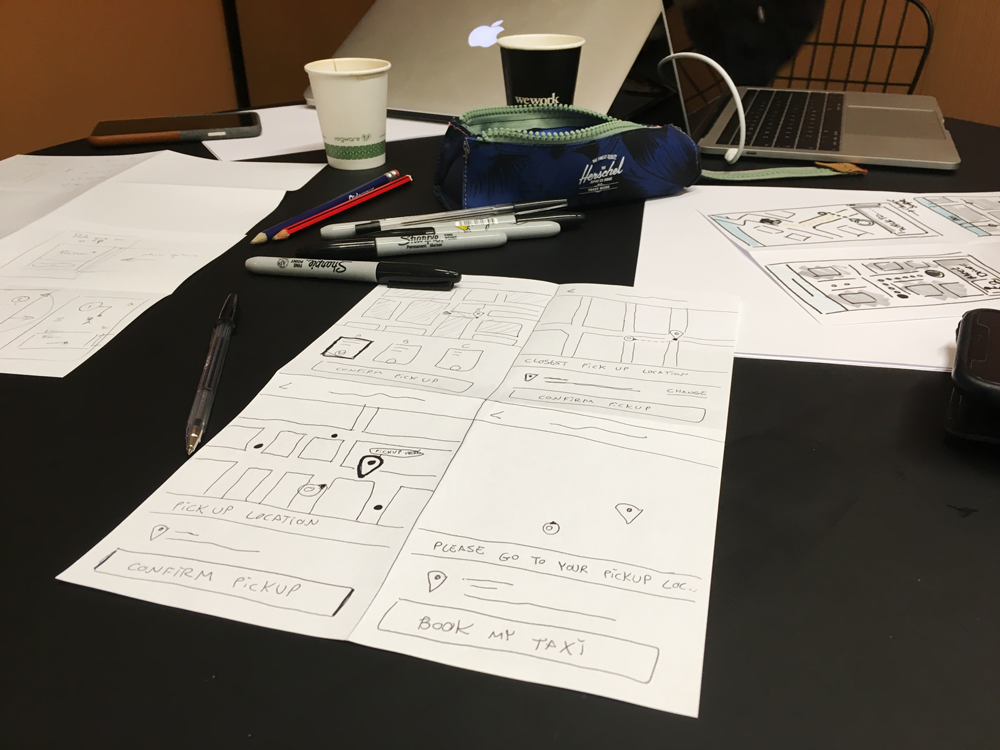
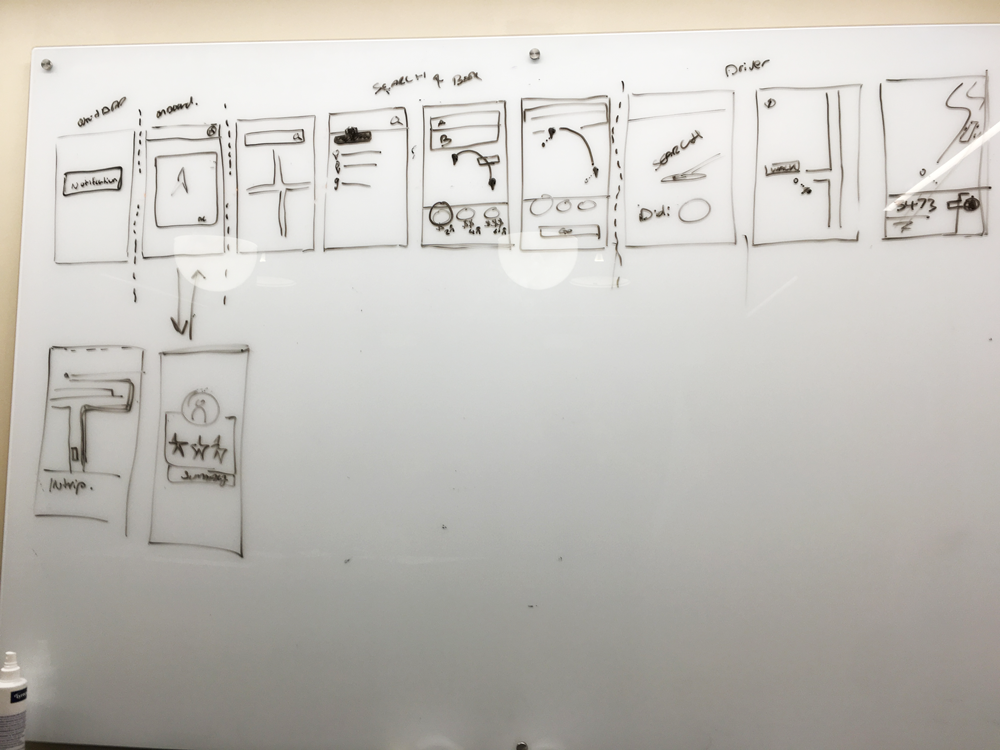

3. Design and Prototyping
The chosen solution involved integrating a taxi booking service directly into the Booking.com app. The design phase included:
- Wireframes: Created wireframes to outline the user flow and interactions within the app. Focused on keeping the process simple and user-friendly.
- Prototyping: Developed interactive prototypes to simulate the user experience and test the flow’s usability.
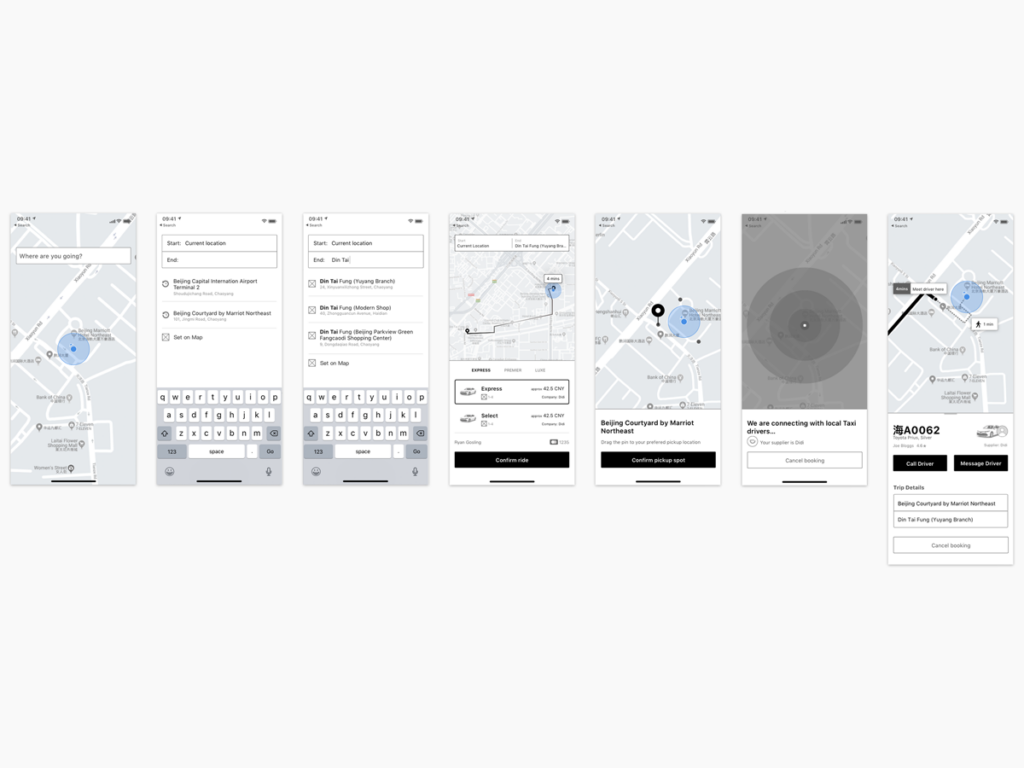
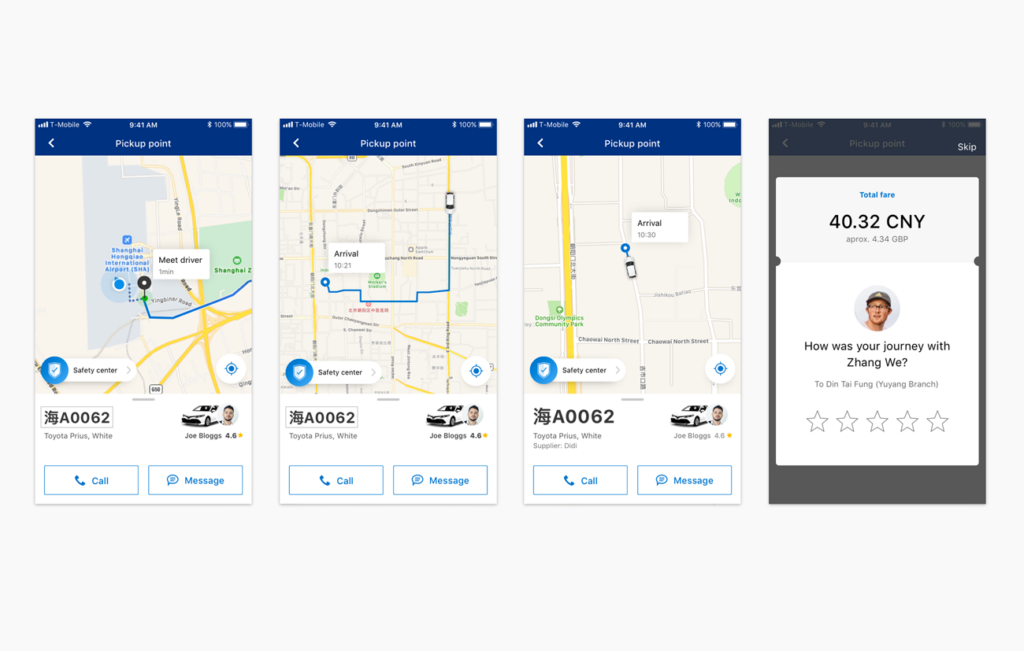
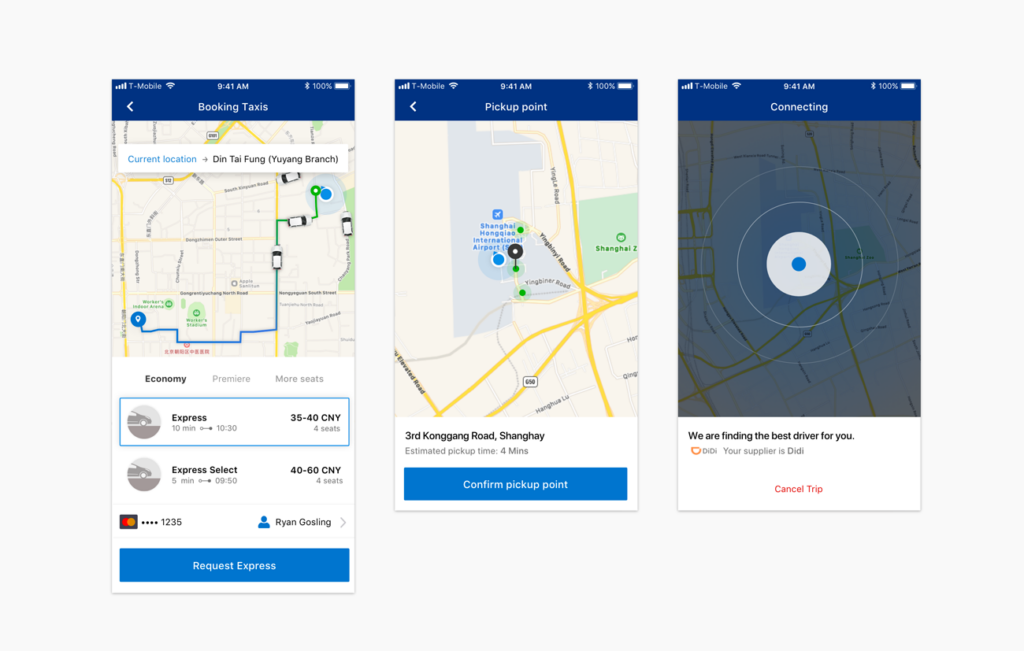
4. Usability Testing
Usability testing was conducted with a group of real users to validate the design:
- User Testing: Invited participants to use the prototype, booking taxis through the app. Gathered feedback and identified pain points.
- Iterative Design: Made necessary iterations based on user feedback, refining the user interface and interactions.
The end-to-end UI flow proved highly intuitive, with all users seamlessly booking a taxi and completing the trip. Some participants highlighted the importance of the “confirm pickup” CTA, indicating that it added a necessary validation step that was missing from the flow.
5. Development and Integration
Worked closely with the engineering team to ensure seamless integration of the taxi on-demand service into the Booking.com app.
6. Launch and Monitoring
The feature was launched as part of an app update. Continuous monitoring and user feedback were used to make improvements. The development phase ensured that the design vision became a tangible, user-friendly reality within the app, ultimately fulfilling the project’s goals of improved user engagement and competitive advantage.

Reflecting on our impact
- Improved user engagement: The integration of the taxi on-demand service significantly increased user engagement with the app. Users found it more convenient to book taxis through Booking.com.
- Enhanced trust: The Booking.com brand’s trustworthiness extended to the taxi service, mitigating user concerns about safety and reliability.
- Increased competitiveness: Booking.com’s comprehensive travel solution with the taxi service integrated helped maintain its competitive edge in the travel market.
Conclusion
The design and integration of the taxi on-demand service within the Booking.com app successfully addressed the challenges of user experience, trust, and competition. The project demonstrated the value of user-centered design, cross-functional collaboration, and iterative development in improving the travel experience for Booking.com users. This project contributed to improving the overall user journey and maintaining Booking.com’s position as a leading travel platform.
